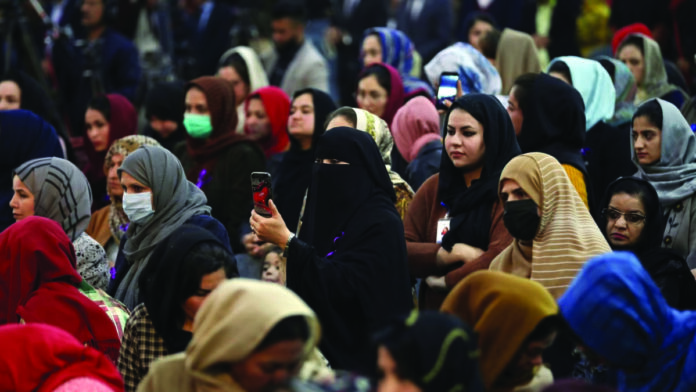There is a saying that “The loudest voices often drown out the quiet truths”. This is especially relevant in light of the events surrounding the conflict in Kashmir. As evidenced by their behaviour in diplomatic practices and lack of collaboration in SAARC and other bilateral or multilateral regional forums, Pakistan and India have been at each other’s throats. They continue to use the conflict for political purposes, but the true problem— the misery of the Kashmiris— remain. Similarly, there are grounds to think that the problem of Taliban subjugation of Afghanis— particularly women— in Afghanistan is an additional illustration of this.
The media has always played a critical role in shaping global diplomatic practices by bringing sensationalism to key events to get out the desired results. Instances include the Gulf war (1990-1991), War in Iraq (2003), North Korea’s Nuclear Programme, Hong Kong protests (2019-2020) and so on, where sensationalism in the media created a more horrific image than reality, which in turn influenced decisions about foreign policy that favoured certain factions. Let’s shift the focus to how the Taliban is perceived in relation to women.
There is no doubting the injustices and mistreatment women endure ‘apparently’ in the name of Islam, but what stands out more in international media coverage is the emphasis on repression and strictness. When the Taliban regained control of Afghanistan in 2021, international news outlets called out and highlighted the re-imposition of strict dress codes; wearing a ‘proper hijab’, and punishing the male relative if not observed (United Nations, 2024). The following coverage focused on the stark regression in women’s rights and freedoms and highlighted extreme examples and dramatic images. While these stories raised global concerns, they often overshadowed the complex and varied experiences of Afghan women while also ignoring the fact that most of them observe purdah by choice. This sensational approach can reinforce stereotypes and paint a monochromatic picture which oversimplifies the experiences of Afghan women and ignores the broader concept.
Cultural biases have also influenced media portrayals by emphasizing differences between Western and Afghan cultures. Stories focusing on the perceived backwardness of Taliban practices compared to Western standards have been floating while overlooking local nuances and the agency of Afghan women. This approach can again obscure the broader social and political contexts in which these practices occur and oversimplify the experiences of Afghan women. Shadi Hamid, an American author and political scientist quotes in one of his research articles:
The questions which pop to mind are: How does the global focus on power struggles and territorial disputes obscure the human cost of these long-standing conflicts? If international writers and media outlets continue to amplify external perspectives over the actual stories of those living under these circumstances, can we truly say we understand the reality on the ground?
The United States never understood Afghanistan. American planners thought they knew what the country needed, which was not quite the same as what its people wanted. American policy was guided by fantasies; chief among them was the idea that the Taliban could be eliminated and the whole culture can be eliminated in the process. (Hamid, 2021)
International writers, in particular, wield significant influence in forming narratives that often become the lens through which the world views this complex dynamic. Their storytelling choices and framing can have far-reaching consequences which not only impacts public opinion but also global policy decisions. Works like A Thousand Splendid Suns (Khaled Hossaini), The Bookseller of Kabul (Asne Seierstad), When the Moon is Low (Nadia Hashimi) etc are the examples of such literature which has shaped the perceptions of West regarding the Taliban, Afghanistan and its women. Coverage like that may align with the foreign policy interests of certain nations which are looking to justify military intervention or support for particular political agendas. An instance of this is the 2001 US military action in Afghanistan, which was justified by a mixture of 9/11 aftermath, media representations of the Taliban’s abuse of women, and their harbouring of Al-Qaeda. This way, by highlighting the Taliban’s oppressive practices, international media can elicit support for interventionist policies and create narratives that serve the strategic goals of foreign powers.
So whose voice is actually missing in this narrative? Too often, it is the voices of Afghan women themselves. Their perspectives, experiences, and stories are frequently overshadowed by international interpretations. They might have experienced persecution in their own homes, at the hands of their own relatives, or because of a host of other issues unique to being a woman, just like other non-Afghan women. When Afghan women do speak out, their narratives can offer a much-needed balance, providing nuanced insights into the complexities of life under the Taliban. These voices will have the potential to challenge one-dimensional portrayals which reveal the resilience, resourcefulness, and agency of Afghan women. International writers have this responsibility to present more nuanced and accurate portrayals of the Taliban’s relationship with women, considering the broader sociopolitical context in their reporting. Ethical storytelling demands a commitment to balance, ensuring that the narrative does not ignite more stereotypes or serve narrow interests.
The international media’s framing of the Taliban and women’s relationship in Afghanistan bears striking similarities to the way the Kashmir issue is portrayed on the global world forum. In both cases, the narratives are often dictated by the geopolitical interests and rivalries of other countries rather than the lived experiences of the people who are directly affected. The questions which pop to mind are: How does the global focus on power struggles and territorial disputes obscure the human cost of these long-standing conflicts? If international writers and media outlets continue to amplify external perspectives over the actual stories of those living under these circumstances, can we truly say we understand the reality on the ground?























